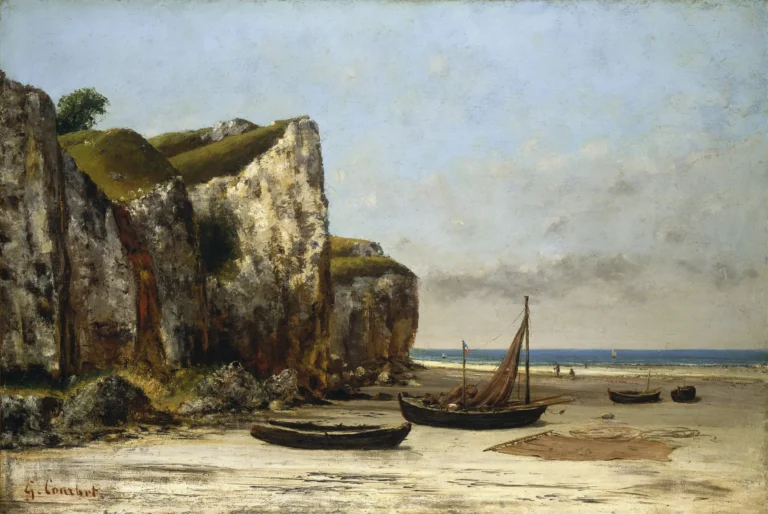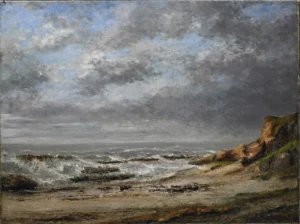Beach in Normandy
Beach in Normandy is a captivating oil on canvas painting by Gustave Courbet, created during the height of the Realist movement between 1872 and 1875. Depicting the tranquil landscape of Normandy, it showcases towering cliffs and a sunny beach dotted with boats. Courbet's adept use of color and composition reflects his deep connection to nature and the beauty of the seascape, a favorite theme of his after his formative visits to the coast.
1872 - 1875
About the Artwork
Gustave Courbet created Beach in Normandy during a pivotal time in his career when he was delving into the beauty of the natural world. His admiration for the Normandy coast began in 1865 and fundamentally changed his artistic approach. This painting captures his fascination with the essence of landscape without imposing human elements or narratives, allowing the viewer to immerse themselves in the natural beauty of the sea and cliffs. Courbet's expertise in portraying texture and light reinforces the realism he championed, making this artwork a significant contribution to both the Realist movement and 19th-century art.
Did You Know
Gustave Courbet’s deep exploration of the Normandy coast not only refined his technique but also led him to shift his subject matter, focusing on landscapes devoid of human presence, which was a departure from traditional narrative-driven artworks.
As a leading figure of the Realism movement, Courbet emphasized the depiction of contemporary life and the natural world, striving for authenticity in his landscapes, which resonated with many artists of his time and influenced future generations.
The Beach in Normandy is part of a significant collection housed at the National Gallery of Art, showcasing Courbet’s masterful approach to landscape painting and highlighting the importance of natural beauty in the narrative of art history.










